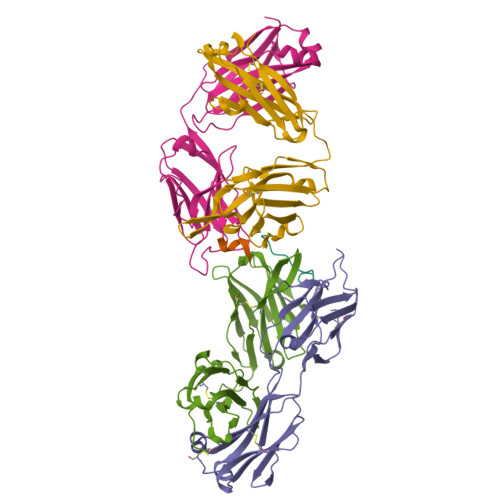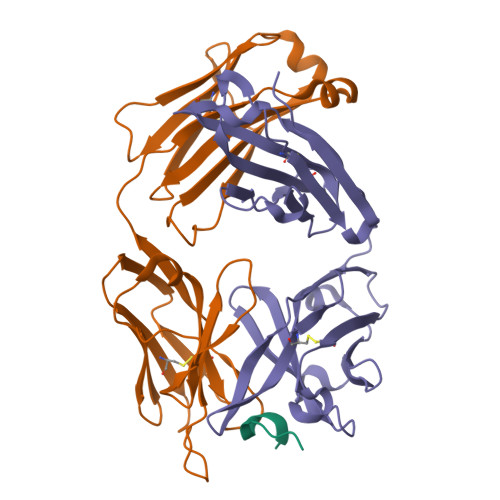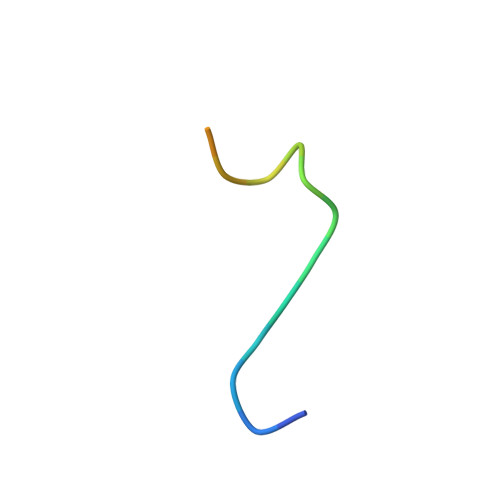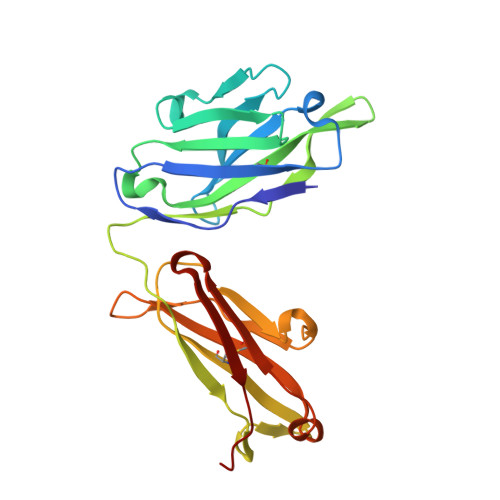Structural basis of Plasmodium vivax inhibition by antibodies binding to the circumsporozoite protein repeats.
Kucharska, I., Hossain, L., Ivanochko, D., Yang, Q., Rubinstein, J.L., Pomes, R., Julien, J.P.(2022) Elife 11
- PubMed: 35023832
- DOI: https://doi.org/10.7554/eLife.72908
- Primary Citation of Related Structures:
7RLV, 7RLW, 7RLX, 7RLY, 7RLZ, 7RM0, 7RM1, 7RM3 - PubMed Abstract:
Malaria is a global health burden, with Plasmodium falciparum (Pf) and Plasmodium vivax (Pv) responsible for the majority of infections worldwide. Circumsporozoite protein (CSP) is the most abundant protein on the surface of Plasmodium sporozoites, and antibodies targeting the central repeat region of CSP can prevent parasite infection. Although much has been uncovered about the molecular basis of antibody recognition of the PfCSP repeats, data remains scarce for PvCSP. Here, we performed molecular dynamics simulations for peptides comprising the PvCSP repeats from strains VK210 and VK247 to reveal how the PvCSP central repeats are highly disordered, with minor propensities to adopt turn conformations. Next, we solved eight crystal structures to unveil the interactions of two inhibitory monoclonal antibodies (mAbs), 2F2 and 2E10.E9, with PvCSP repeats. Both antibodies can accommodate subtle sequence variances in the repeat motifs and recognize largely coiled peptide conformations that also contain isolated turns. Our structural studies uncover various degrees of Fab-Fab homotypic interactions upon recognition of the PvCSP central repeats by these two inhibitory mAbs, similar to potent mAbs against PfCSP. These findings augment our understanding of host -Plasmodium interactions and contribute molecular details of Pv inhibition by mAbs to unlock structure-based engineering of PvCSP-based vaccines.
Organizational Affiliation:
Program in Molecular Medicine, The Hospital for Sick Children Research Institute, Toronto, Canada.



















